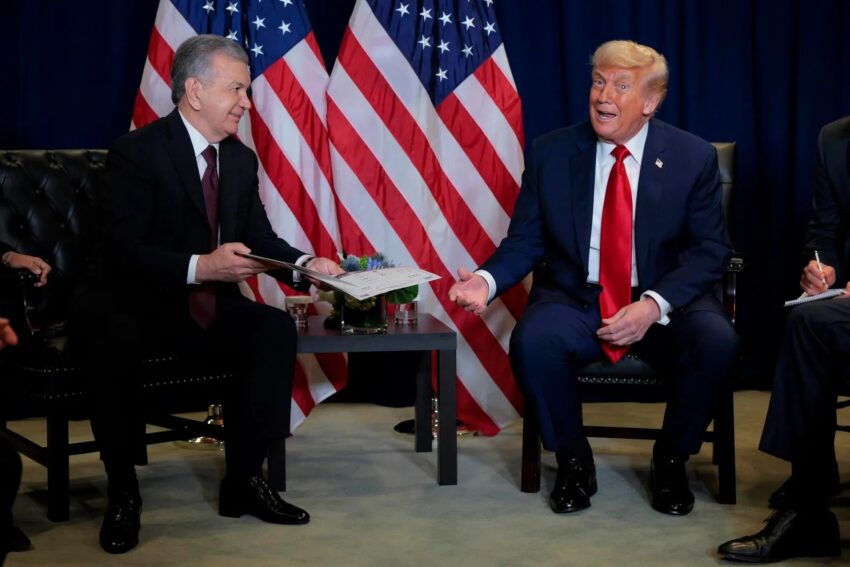Every year, the C5+1 forum brings together the five Central Asian states—Kazakhstan, Kyrgyzstan, Tajikistan, Turkmenistan, and Uzbekistan—alongside the United States. The forthcoming 2025 meeting between Donald Trump and the C5 presidents, scheduled for November 6, 2025, in Washington, D.C., will mark the 10th anniversary of the forum. Notably, this will be the first time the meeting is held at the White House, further elevating the summit’s significance.
### Geopolitical Importance of the C5+1 Forum
The geopolitical rationale for these talks is clear. Russia, China, Iran, and Afghanistan border the five Central Asian states, making the region highly important to American national and economic security. Together, the C5 countries are home to 84 million people and boast vast natural resources, including rare earth elements, uranium, gold, oil, gas, and more.
This combination of geopolitical centrality, security challenges, and abundant human capital presents a range of opportunities—and a complex set of challenges—for the C5+1 forum to navigate. For several years, discussions focused on getting C5 commodities onto the global market, managing Russian assertiveness, mitigating Chinese influence, investing profitably, and promoting regional integration and economic diversification to counterbalance powerful neighbors.
Most engagement was dominated by Western interests in hydrocarbons and counterterrorism, alongside concerns about China’s dominance over Turkmenistan’s extensive gas reserves. While these initiatives achieved some success, their scope remained limited. However, the Russian invasion of Ukraine in 2022 and escalating U.S.-China economic tensions created an atmosphere of crisis and urgency, shifting the agenda toward durable strategic cooperation across multiple economic sectors.
### America’s Next Eurasian Hub?
Shavkat Mirziyoyev assumed the presidency of Uzbekistan in 2016 following the death of his predecessor. Since its independence from the Soviet Union, Uzbekistan had been a highly centralized and relatively isolated state, with an economy dominated by cotton cultivation and mining, managed by inefficient, Soviet-era state-owned enterprises.
Mirziyoyev set out to change this by pushing for closer regional integration and opening Uzbekistan’s economy—and the broader region—to trade and investment, aiming to create a new Eurasian hub.
Over the last decade, Uzbekistan has implemented comprehensive and successful economic reforms. The country’s relatively closed economy is opening up at breakneck speed. Uzbekistan is aligning its capital market structure with Western norms and has established a National Investment Fund in partnership with Franklin Templeton to facilitate the privatization of state-owned assets.
The privatization of inefficient enterprises has already attracted foreign investors. NASDAQ is exploring ways to modernize the Uzbek Stock Exchange, while Uzbek banks and state-owned enterprises have successfully accessed international stock markets with assistance from Citigroup.
These efforts are producing tangible results. Boeing recently secured an $8.5 billion deal with Uzbekistan Airways for up to 22 of its wide-body 787 aircraft. Air Products is undertaking strategic projects in industrial chemistry and gases, including a gas-to-liquid processing plant. Over 300 U.S. companies are now active in Uzbekistan, encouraged partly by anticipated concessions in new special economic zones and by over $105 billion in bilateral economic agreements announced by Mirziyoyev in September 2025. Major firms like Citi, Honeywell, and Franklin Templeton also plan to open offices in Uzbekistan.
### The China Dimension
Despite these American successes in Uzbekistan, particularly beyond the energy sector, America’s mission is far from accomplished. Chinese investment in the region still dwarfs American investment by a factor of three, and trade volumes are an order of magnitude higher.
While over 300 American companies are active in Uzbekistan, China’s State Council reports that more than 3,400 Chinese companies operate there. Whereas Washington has traditionally assigned a low foreign policy priority to Central Asia, Beijing views the region as a cornerstone of its strategy, having launched the Belt and Road Initiative (BRI) twice in neighboring Kazakhstan.
China’s engagement in Central Asia is extensive. Projects like the China-Kyrgyzstan-Uzbekistan railway and facilitated Chinese access to Turkmenistan’s vast natural gas reserves—often at Europe’s expense—have raised concerns in Washington. Furthermore, the January 2024 proclamation of an “all-weather comprehensive strategic partnership” between China and Uzbekistan may reflect considerations related to Moscow’s great power agenda and Uzbekistan’s balancing act between Russia and China.
Washington responded by announcing an Enhanced Strategic Partnership Dialogue with Tashkent in November 2024. Nevertheless, China’s influence should not be considered hegemonic. As Chinese business and nationals have become more present in Uzbekistan’s economy, reported anxieties about Chinese involvement have grown among segments of the local population.
When the first BRI initiative showed shortcomings, China unveiled Belt and Road 2.0 in neighboring Kazakhstan, prompting Uzbekistan to recalibrate and scale back cooperation. Though Uzbekistan cannot choose its neighbors, it has strategically managed its engagements, balancing sovereignty protection with constructive relations with powerful neighbors.
### Toward a New Eurasian Policy
Since coming to power, President Shavkat Mirziyoyev has worked to balance relations with China and Russia by actively courting Western investment. Starting January 2026, Tashkent will offer visa-free entry for American tourists eager to explore historic sites like Bukhara and Samarkand.
For America, the quest for scalable markets with educated populations, sizable consumption bases, and regional hub potential aligns well with Uzbekistan’s opening reforms. As these obstacles diminish, Uzbek-American cooperation stands to deepen significantly.
The time has come for both sides to convert this emerging economic relationship into sustainable, long-term cooperation with mutually beneficial geopolitical dividends.
### Recommendations for Strengthening U.S.-C5 Engagement
The C5 countries and the United States should appoint senior officials dedicated to supervising the implementation of agreements, complete with detailed schedules and quarterly reviews.
Following the U.S. withdrawal from Afghanistan, America’s footprint in Central Asia has been light. To date, no sitting U.S. president has visited the region. Meanwhile, the Jackson-Vanik amendment—which prevents the U.S. from establishing permanent normal trade relations with the Central Asian states—remains a relic of the past, as noted by U.S. Secretary of State Marco Rubio.
A comprehensive U.S. engagement strategy that enhances economic and strategic ties with Uzbekistan can help secure a vital regional partnership. By doing so, America can strengthen its position in Central Asia and contribute to regional stability and prosperity moving forward.
https://bitcoinethereumnews.com/finance/how-america-could-advance-beyond-energy-in-eurasia/
